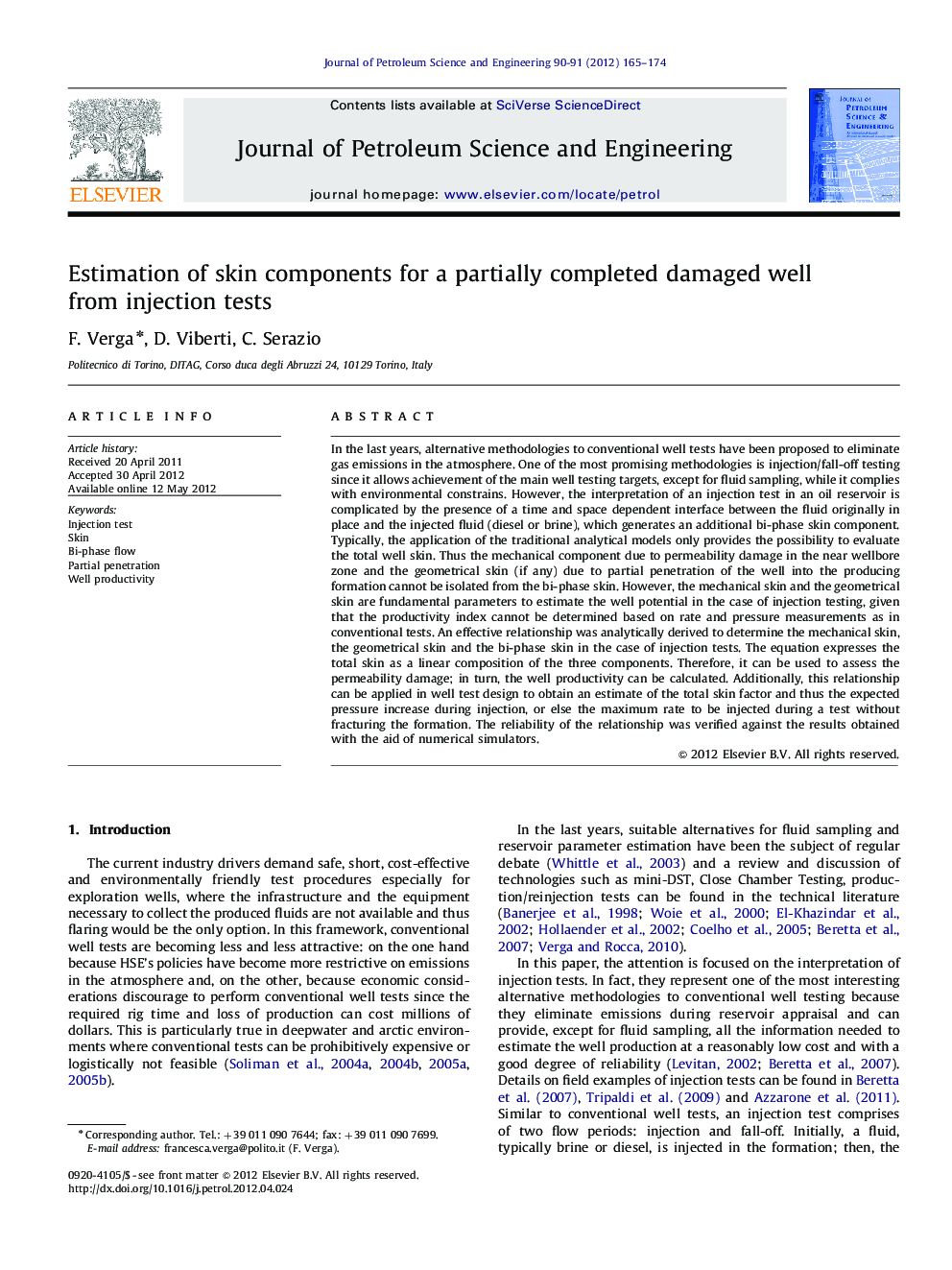| Article ID | Journal | Published Year | Pages | File Type |
|---|---|---|---|---|
| 1755447 | Journal of Petroleum Science and Engineering | 2012 | 10 Pages |
In the last years, alternative methodologies to conventional well tests have been proposed to eliminate gas emissions in the atmosphere. One of the most promising methodologies is injection/fall-off testing since it allows achievement of the main well testing targets, except for fluid sampling, while it complies with environmental constrains. However, the interpretation of an injection test in an oil reservoir is complicated by the presence of a time and space dependent interface between the fluid originally in place and the injected fluid (diesel or brine), which generates an additional bi-phase skin component. Typically, the application of the traditional analytical models only provides the possibility to evaluate the total well skin. Thus the mechanical component due to permeability damage in the near wellbore zone and the geometrical skin (if any) due to partial penetration of the well into the producing formation cannot be isolated from the bi-phase skin. However, the mechanical skin and the geometrical skin are fundamental parameters to estimate the well potential in the case of injection testing, given that the productivity index cannot be determined based on rate and pressure measurements as in conventional tests. An effective relationship was analytically derived to determine the mechanical skin, the geometrical skin and the bi-phase skin in the case of injection tests. The equation expresses the total skin as a linear composition of the three components. Therefore, it can be used to assess the permeability damage; in turn, the well productivity can be calculated. Additionally, this relationship can be applied in well test design to obtain an estimate of the total skin factor and thus the expected pressure increase during injection, or else the maximum rate to be injected during a test without fracturing the formation. The reliability of the relationship was verified against the results obtained with the aid of numerical simulators.
► An expression is given that combines the main skin components affecting injection test responses. ► Mechanical, geometrical and bi-phase skin components are accounted for in the given expression. ► The derived equation allows estimation of the mechanical skin, necessary for well productivity. ► The equation was derived analytically from Darcy's law under steady state conditions. ► The equation was validated for several reservoir scenarios proving to be of general applicability.
